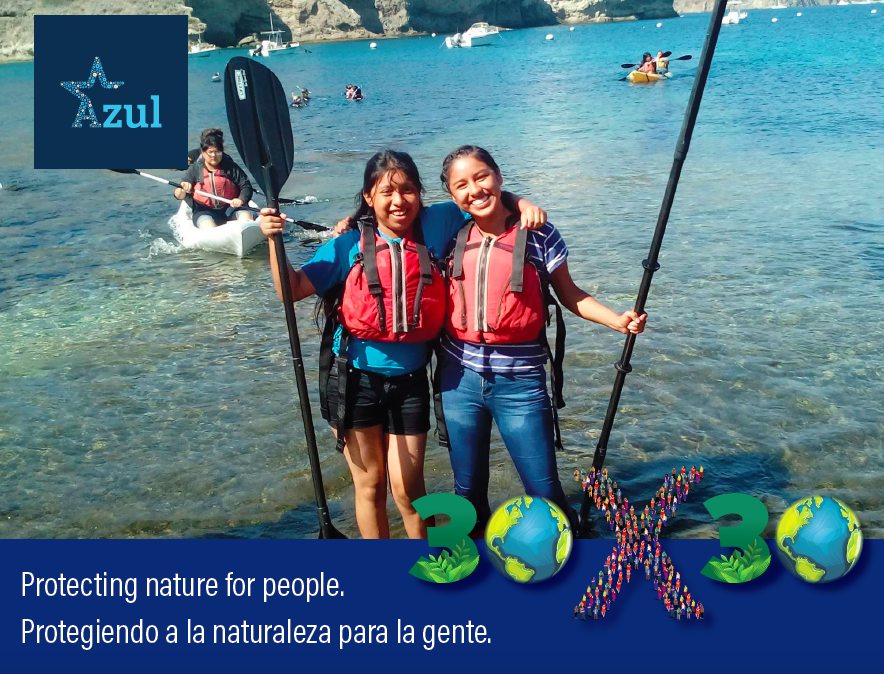New Mexico joins other states in quest to protect 30X30. What’s next?

Azul applauds New Mexico Governor Michelle Lujan Grisham for her recent commitment to conserve at least 30 percent of all lands within the state by 2030. We believe every state’s commitment to conserving 30 percent of their lands and waters by 2030 (30×30) brings us one step closer to the level of protection we need to mitigate climate change and conserve the biodiversity that supports our communities’ health and well-being, recreation economies, and food and water supplies.
With this new commitment, New Mexico joins California, Hawaii, Maine and Nevada by setting a state-level 30×30 goal. So far, state leadership has been rooted in science, equity, and the need to conserve and restore biodiversity near BIPOC and EJ communities, as well as improve public access to nature for BIPOC and EJ communities. State 30×30 commitments— like New Mexico’s Executive Order or the legislation introduced in Michigan, South Carolina and New York set an example for and put pressure on the federal government to ensure that enough funding and resources are made available to uphold the principles prioritized by states.
State 30×30 policies primarily focus on how each state will conserve state-managed lands and waters, but they require coordination with federal agencies to conserve federal lands and waters within each state— such as national marine sanctuaries or national forests. Unfortunately, these state requirements do not guarantee anything at the federal level other than agency collaboration. This means, for example, that New Mexico has no authority to change how federal agencies manage federal land for purposes that impact land and water conservation. “Despite recommendations in New Mexico’s EO to establish or enhance federal protections and designations on federal land within the state, we need to push for strong, equitable federal implementation, measures of progress, and support for locally-led efforts to ensure that at least 30 percent of our national land and waters are conserved,” says Karla Garibay García, Azul’s Project Manager.
In January 2021, President Biden took one important step when he signed an executive order that required federal agencies to develop guidelines on how to achieve 30×30 nationally. Shortly after, as a result of initial stakeholder consultations with Tribal, state, local, and territorial governments, the federal government released its Conserving and Restoring America the Beautiful report, which outlined principles that support equitable, science-based, locally-led efforts to achieve 30×30.
So what comes next? The federal government will publish the first 30×30 progress report at the end of 2021. California will publish the key takeaways drawn from a year-long stakeholder consultation process involving expert panels and regional and topical workshops in the “Pathways to 30×30 Document” this fall.
As other states and federal agencies continue to develop their own stakeholder engagement sessions to better understand how to achieve 30×30 and what “conserved” really means, Azul will be there every step of the way. We will push for 30×30 to be achieved in partnership with and for the BIPOC and EJ communities that we are lucky to serve. As state and federal processes move toward implementation, we will continue to advocate for equitable, science-based marine conservation, environmental justice, and public access.